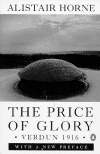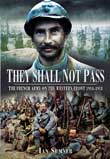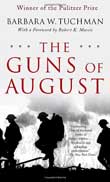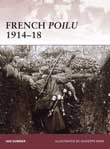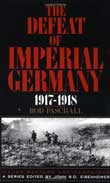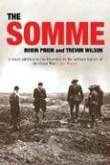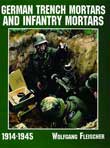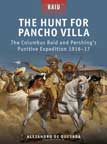

The "Price of Glory: Verdun 1916" is the second book of Alistair Horne's trilogy, which includes "The Fall of Paris" and "To Lose a Battle" and tells the story of the great crises of the rivalry between France and Germany. The battle of Verdun lasted ten months. It was a battle in which at least 700,000 men fell, along a front of fifteen miles. Its aim was less to defeat the enemy than bleed him to death and a battleground whose once fertile terrain is even now a haunted wilderness. Alistair Horne's classic work, continuously in print for over fifty years, is a profoundly moving, sympathetic study of the battle and the men who fought there. It shows that Verdun is a key to understanding the First World War to the minds of those who waged it, the traditions that bound them and the world that gave them the opportunity. "Verdun was the bloodiest battle in history..."The Price of Glory" is the essential book on the subject". ("Sunday Times"). "It has almost every merit...Horne sorts out complicating issues with the greatest clarity. He has a splendid gift for depicting individuals". (A.J.P. Taylor, "Observer"). "A masterpiece". ("The New York Times"). "Compellingly told...Alastair Horne uses contemporary accounts from both sides to build up a picture of heroism, mistakes, even farce". ("Sunday Telegraph"). "Brilliantly written ...very readable; almost like a historical novel - except that it is true". (Field Marshal Viscount Montgomery). One of Britain's greatest historians, Sir Alistair Horne, CBE, is the author of a trilogy on the rivalry between France and Germany, "The Price of Glory", "The Fall of Paris" and "To Lose a Battle", as well as a two-volume life of Harold Macmillan.
This graphic collection of first-hand accounts sheds new light on the experiences of the French army during the Great War. It reveals in authentic detail the perceptions and emotions of soldiers and civilians who were caught up in the most destructive conflict the world had ever seen. Their testimony gives a striking insight into the mentality of the troops and their experience of combat, their emotional ties to their relatives at home, their opinions about their commanders and their fellow soldiers, the appalling conditions and dangers they endured, and their attitude to their German enemy. In their own words, in diaries, letters, reports and memoirs - most of which have never been published in English before - they offer a fascinating inside view of the massive life-and-death struggle that took place on the Western Front. Ian Sumner provides a concise narrative of the war in order to give a clear context to the eyewitness material. In effect the reader is carried through the experience of each phase of the war on the Western Front and sees events as soldiers and civilians saw them at the time. This emphasis on eyewitness accounts provides an approach to the subject that is completely new for an English-language publication. The author's pioneering work will appeal to readers who may know something about the British and German armies on the Western Front, but little about the French army which bore the brunt of the fighting on the allied side. His book represents a milestone in publishing on the Great War.
In this Pulitzer Prize-winning history, Tuchman writes about the turning point of the year 1914—the month leading up to the war and the first month of the war. This was the last gasp of the Gilded Age, of Kings and Kaisers and Czars, of pointed or plumed hats, colored uniforms, and all the pomp and romance that went along with war. How quickly it all changed, and how horrible it became. Tuchman is masterful at portraying this abrupt change from 19th to 20th Century. And how she manages to make the story utterly suspenseful, when we already know the outcome, is the mark of a great writer, and a classic volume of history.
Praise for The Guns of August
“A brilliant piece of military history which proves up to the hilt the force of Winston Churchill’s statement that the first month of World War I was ‘a drama never surpassed.’”—Newsweek
“More dramatic than fiction . . . a magnificent narrative—beautifully organized, elegantly phrased, skillfully paced and sustained.”—Chicago Tribune
“A fine demonstration that with sufficient art rather specialized history can be raised to the level of literature.”—The New York Times
“[The Guns of August] has a vitality that transcends its narrative virtues, which are considerable, and its feel for characterizations, which is excellent.”—The Wall Street Journal
'Why,' the Kaiser enquired of Czar Nicholas in 1913, did he wish to ally himself with France when 'the Frenchman is no longer capable of being a soldier?' Indeed, during World War I (1914-1918) the French Army was in a state of disarray, plagued by indiscipline, mutinies and desertion. The ordinary French citizens that were called upon to defend their motherland, the Poilu, were disrespected and demoralized, and the infamous mutinies of 1917 by the Poilu were not protests against the war itself, but against how the war was conducted. The rebellions sent a stark warning, forcing a reform in the management of the war. Consequently, the performance of many French regiments improved and the Poilu went on to become the only European troops to fight the entire war within their own borders. Ian Sumner expertly charts the history of the Poilu, from the conscription of hundreds of thousands of men, through their training, to the horrors of the trenches and the fear of no-man's land, providing a fascinating insight into the events that led to the 1917 revolts. New artwork and diagrams illustrate the experiences of the soldiers as the comforts of civilian life were stripped away from them and the trenches became their homes.
The first day of the Battle of the Somme of World War I (1914-1918) is still on record as having the largest number of deaths in any one day in any war. This book explores the myths of this infamous battle, and the use of mines, tunnels, gas and flame-throwers by the British in combination with innovative tactics such as smoke. Andrew Robertshaw analyses the first day of the battle, explaining how British tactics developed as a result of the experience of the Somme, and provides an overview of the events along the entire front line, examining the actions of two British Corps, VIII at Serre and XIII at Montauban.
Osprey's examination of the destructive events of a pivotal battle of World War I (1914-1918). On 21 February 1916 German General Erich von Falkenhayn unleashed his hammer-blow offensive against the French fortress city of Verdun. His aim was nothing short of the destruction of the French army. Falkenhayn was sure that the symbolic value of Verdun was such that the French would be ‘compelled to throw in every man they have.’ He was equally sure that ‘if they do so the forces of France will bleed to death’. The massed batteries of German guns would smash the French troops in their trenches and bunkers. But the French hung on with immense courage and determination and the battle became a bloody war of attrition.
This book goes a long way towards showing how many of the conventional beliefs concerning WW1 are totally innaccurate. He dosen't diminish the loss of life but he does show that the generals in charge were no less capable than their WW2 counterparts. Much of what was practiced in WW2 started in WW1. Pascall builds a compelling case that the generals on both sides invented ingenious new strategies that simply failed in the context of a war of attrition. An outstanding contribution to the body of knowledge of World War One.
January 1917. On the Western Front the armies of Imperial Germany, Great Britain, and France were locked in grim stalemate. Repeated attempts by both sides to achieve breakthrough in the face of machine-gun fire, barbed wire, long-range artillery, and poison gas had brought only enormous casualties.The Defeat of Imperial Germany focuses on the innovative plans created by generals on both sides in their struggles to dislodge the entrenched enemy and to restore maneuver and victory on the Western Front. In a series of vivid analyses of successive offensives, Paschall examines the problems of command and what happened when the massed soldiery sought to carry out their orders. These strategies and tactics developed by the military leadership in 1917–1918, though largely failing to shatter the deadlock, would prove successful when implemented twenty years later in World War II.The first volume in the Major Battles and Campaigns series published under the general editorship of John S.D. Eisenhower, The Defeat of Imperial Germany has been designed for the "armchair strategist." Dozens of photographs, many never before published, as well as clearly drawn theater and battlefield maps help to make this book an outstanding, challenging, and original contribution to the history of the Great War.
Despite superior air and artillery power, British soldiers died in catastrophic numbers at the Battle of Somme in 1916. What went wrong, and who was responsible? This book meticulously reconstructs the battle, assigns responsibility to military and political leaders, and changes forever the way we understand this encounter and the history of the Western Front.
No conflict of the Great War excites stronger emotions than the war in Flanders in the autumn of 1917, and no name better encapsulates the horror and apparent futility of the Western Front than "Passchendaele". By its end there had been 275,000 Allied and 200,000 German casualties. Yet the territorial gains made in four desperate months were won back by Germany in only three days the following March.
The devastation at Passchendaele, the authors argue, was neither inevitable not inescapable; nor perhaps was it necessary at all. Using a substantial archive of official and private records, Trevor Wilson and Robin Prior provide a full account of the campaign. The book examines the political dimension at a level which has hitherto been absent from accounts of "Third Ypres". It establishes what did occur, the options for alternative action, and the fundamental responsibility for the carnage.
Prior and Wilson consider the shifting ambitions and stratagems of the high command, examine the logistics of war, and assess what the available manpower, weaponry, technology and intelligence could realistically have hoped to achieve. And they explore the experience of the men on the ground in the light—whether they knew it or not—of what was never going to be accomplished.
In August 1914, at Tannenberg in East Prussia, the German 8th Army under Hindenburg and Ludendorff won a stunning victory over two Russian armies. In this richly textured account of the greatly outnumbered German army's defeat of the Russian forces, Showalter, a history professor at Colorado College, provides a thorough historical and cultural context; examines the tactical, operational and strategic aspects of this decisive WW I battle; and clears up many of the myths associated with it. Among them: that Russian General Rennenkampf was "unwilling" to come to the aid of Samsonov's beleaguered 2nd Army; that the 2nd Army was "annihilated"; that the typical Russian soldier was "a uniformed primitive."
Showalter judiciously analyzes Tannenberg's long-range effect on German military thinking, showing, for instance, that the victory led the Wehrmacht to underestimate Russian capabilities during the planning of Operation Barbarossa in 1941. This is a scholarly military study of the highest caliber, written in a crisp and lively style that should attract the general reader as well as the military specialist.
Copyright 1990 Reed Business Information, Inc.
The Tenth Division is unique. It was the first Irish division raised and sent to the Front by Ireland: in fact it was the first Division of Irishmen that ever existed in the British Army. In the Tenth Division, Unionist and Nationalist, Catholic and Protestant, lived, fought and died side by side like brothers. Made up entirely of men who had no military experience, the Tenth Divison was to take part in some of the bloodiest episodes of the War ñ at Suvla Bay and Anzac Cove.
Shown are the various caliber mortars used by the German infantry during World Wars I & II., over 70 b/w photographs, 8 1/2" x 11"
On March 9, 1916, troops under the command of Pancho Villa attacked Columbus, New Mexico and its local detachment of the US 13th Cavalry Regiment, killing 18 people and burning the town. Six days later, on orders from President Woodrow Wilson, General John J. "Black Jack" Pershing led an expeditionary force of 4,800 men into Mexico to capture Villa. What followed was a series of skirmishes, battles, and chases through the wild and uncharted Mexican countryside. While the Americans failed in their ultimate purpose of catching Villa, they did kill two of his top lieutenants. This book charts the progress of the entire enterprise, covering the dusty marches and the bitter gunfights in the streets of small border towns, analyzing the successes and failures of this unique military expedition.
Pope Julius II excommunicates Italian state of Venice
Treaty of St. Truiden: anti-French Trapdoors / Bourgondisch covenant
Battle at Bicacca: Charles I and Pope Adrianus VI beat France
Mogol King Babur beats Sultan of Delhi
1st Spanish settlement in Philippines, Cebu City, forms
Peace of Beaulieu and Paix de Monsieur
King Charles I flees Oxford
Scottish general Montrose defeated
Netherlands and France sign military covenant
Frederik August I "the Strong" becomes Monarch of Saksen
Battle at Culloden Moor: Duke of Cumberland beats "James VIII & III"
US Marines attack shores of Tripoli
Americans under General Pike capture Toronto; Pike is killed
Fire destroys half of Charleston
Imakita Kosen, 1st Zen teacher of D.T. Suzuki, found the awakening
Establishment of Jewish congregations in Lower Austria prohibited
"Pomona" sinks in North Atlantic drowning all 400 aboard
Thomas J Jackson is assigned to command Harpers Ferry
President Abe Lincoln suspends writ of habeas corpus
West Virginia secedes from Virginia after Virginia secedes from US
Cornell University (Ithaca NY) is chartered
Heinrich Schliemann discovers Troi
White League, Paramilitary white supremacist organization, forms
Opera "Le Roi de Lahore" is produced (Paris)
President Hayes removes Federal troops from LA, Reconstruction ends
Pogroms against Russian Jews start in Elisabethgrad
1st Highlander (Yankee) shut-out, Philadelphia Athletics win 6-0
World Exposition opens in Luik
Sultan of Turkey Abdul Hamid II is overthrown
Belgian parliament rejects socialist motion for general voting rights
Relief laws replaces those of 1854, in the Netherlands
Pogrom leader Petljoera declares Ukraine Independence
Hadjememaar, [Corn de Gelder] elected in Amsterdam
Fritz Langs "Dr Mabuse, der Spieler" premieres in Berlin
Yakut ASSR formed in Russian SFSR
Mussolini government italian place in South Tirol / Alto Adige
Antwerp soccer tie Belgium-Netherlands 1-1
Karl Jansky reports reception of cosmic radio signal in Washington DC
Yanks pull a 1st inning triple-play and beat Philadelphia Athletics 9-8
1st US social security payment made
US Social Security system makes its 1st benefit payment
Himmler orders establishment of Auschwitz Concentration Camp
German troops occupy Athens Greece
Belgium Jews are forced to wear stars
Tornado destroys Pryor Oklahoma killing 100, injuring 300
Lou Jansen and Jan Dieters arrested, lead illegal CPN party in Holland
Soviet Union breaks contact with Polish government exiled in London
Boston Brave Jim Tobin no-hits Brooklyn Dodgers, 2-0
2nd Republic of Austria forms
Italian partisans capture Mussolini prisoner
US 5th army enters Genua
1st radar installation aboard a coml ship installed
Babe Ruth Day celebrated at Yankee Stadium and through out US
Arab legion attacks Gesher bridge on Jordan River
"Tickets, Please" opens at Coronet Theater NYC for 245 performances
South Africa passes Group Areas Act segregating races
Mohammed Mossadeq chosen Premier of Persia
"4 Saints in 3 Acts" closes at Broadway Theater NYC after 15 performances
1st general elections in British Guyana, won by Jagans PPP
Wrestler Freddie Blassie coins term "Pencil neck geek"
Heavyweight champ, Rocky Marciano, retires undefeated from boxing
"Today" show goes abroard 1st time (Paris France)
Liu Sjau-chi elected President of China PR
1st atomic powered electric-drive submarine launched (Tullibee)
South Korean President Syngman Rhee resigns
Togo (formerly French Togo) declares independence from French adm
NASA launches Explorer 11 into Earth orbit to study gamma rays
NFL officially recognizes Hall of Fame in Canton, Ohio
Sierra Leone declares independence from the UK
"Jopie" Pengel forms government in Suriname
Cuban Premier Fidel Castro arrives in Moscow
RC Duncan patents "Pampers" disposable diaper
Dmitri Shostakovitch completes his 2nd cello concert
Rocky Marciano retires as undefeated boxing champ
"Education of Hyman Kaplan" closes at Alvin NYC after 28 performances
Baltimore Oriole Tom Phoebus no-hits Boston, 6-0
Congress of Political Party Radicals (PPR) forms in the Netherlands
Carol Mann wins LPGA Raleigh Ladies Golf Invitational
Curt Flood resigns Senators after 13 games and departs for Denmark
Apollo 16 returns to Earth
New York City Mayor John Lindsey appeals that John Lennon not be deported
Kansas City Royal Steve Busby no-hits Detroit Tigers, 3-0
Pan Am 707 crashes into mountains of Bali, killing 107
Sandra Haynie wins LPGA Charity Golf Classic
"So Long 174th St" opens at Harkness Theater NYC for 16 performances
Arabic Monetary Fund established in Abu Dhabi
Bloody riots in Soweto South Africa
HCC, Hobby Computer Club, forms in the Netherlands
Accident at nuclear reactor Willow Island, W Virginia, kills 51
George Harrison releases "Love Comes to Everyone"
Barbara Barrow wins LPGA Birmingham Golf Classic
1st female soccer official is hired by NASL
Beatle Ringo Starr marries actress Barbara Bach [Goldbach]
Nordiques 1-Isles 4 - Semifinals - Isles hold 1-0 lead
Trial of John W Hinckley Jr attempted assassin of Reagan, begins
Nolan Ryan becomes strikeout King (3,509), passing Walter Johnson
Cleveland Indians beat Detroit Tigers, 8-4, in 19 innings
Over 70 inches of snow falls on Red Lake, Montana
"Sweet Charity" opens at Minskoff Theater NYC for 368 performances
Captain Midnight (John R MacDougall) interrupts HBO
Pat Bradley wins LPGA S&H Golf Classic
US Justice Department bars Austrian Chancellor Kurt Waldheim from entering US, due to his aid of Nazi Germany during WWII
"Starmites" opens at Criter Ctr SR Theater NYC for 60 performances
Beijing students take over Tiananmen Square in China
Hurricane in Bangladesh, kills 500
Mandatory seatbelt law goes into effect in Italy
50th annual barbershop quartet singing convention held (Mich)
Dodger Orel Hershiser undergoes career-threatening shoulder surgery
Firestone World Bowling Tournament of Champions won by David Ozio
"Small Family Business" opens at Music Box Theater NYC for 48 performances
New York Jets finish perfect 5-0 pre-season for 1st time
New York Mets trade David Cone to Toronto Blue Jays for Jeff Kent
Afghan Antonov AN-32 crashes at Tashqurgan, kills 76
"Inspector Calls" opens at Royale Theater NYC for 454 performances
7th longest NHL game: New Jersey Devils beat Buffalo Sabres (125 min 43 seconds)
Graeme Obree bicycles world record time (52,713 km)
President Nixon buried in Nixon Library in California
Twins righty Scott Erickson no-hits Brewers 6-0
"Indiscretions" opens at Ethel Barrymore Theater NYC for 221 performances
Coors Field in Colo opens - Denver Rockies beats Mets 11-9 in 14
"Little Foxes, " opens at Vivian Beaumont NYC for 56 performances
"Stanley, " closes at Circle in the Square Theater, New York City
Frank Nobilo wins Greater Greensboro Chrysler Classic at Forest Oaks
Las Vegas Senior Golf Classic by TruGreen-ChemLawn
Nancy Lopez wins LPGA Chick-fil-A Charity Championship
